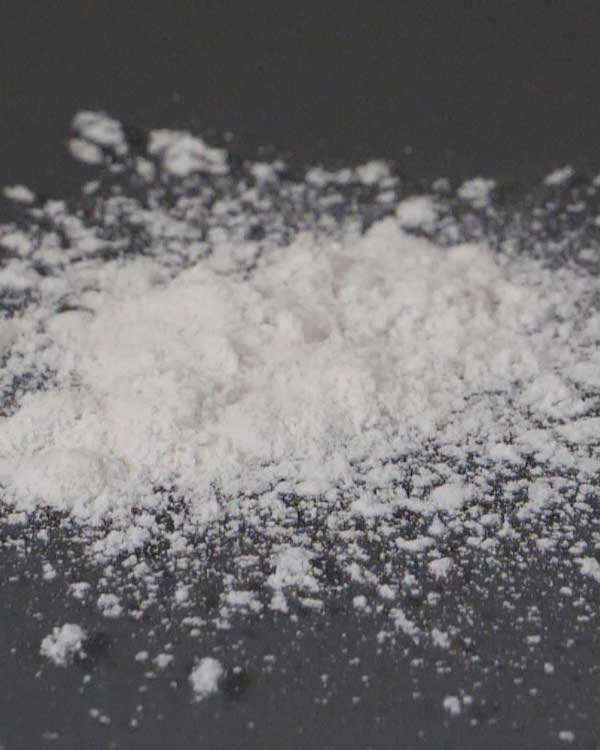Perlite
Perlite is an amorphous volcanic glass that has a relatively high water content, typically formed by the hydration of obsidian. It occurs naturally and has the unusual property of greatly expanding when heated sufficiently. It is an industrial mineral and a commercial product useful for its light weight after processing.
Properties
When crude perlite is heated rapidly to temperatures above 870° C (1,600° F), it pops in a manner similar to popcorn creating countless tiny bubbles in the heat softened glassy particles. The combined water vaporizes and escapes, causing the material to expand 7 to 16 times its original volume. Unprocessed perlite has a bulk density around 1100 kg/m3 (1.1 g/cm3), while expanded perlite typically has a bulk density of about 30–150 kg/m3, so it is much lighter in weight per volume. It is these tiny glass-sealed bubbles that account for the amazing light weight and other exceptional physical properties of expanded perlite.
The expansion process also creates one of perlite's most distinguishing characteristics: its white color. While the crude perlite rock may range from transparent to light gray to glossy black, the color of expanded perlite ranges from snowy white to grayish white.
Source
Our perlite comes from the Nu-Alexite and Socorro perlite deposits located in New Mexico, U.S. The ore is formed by magmatic processes, usually in "domes," that over geologic time periods entrap water into the matrix. The mechanism through which this occurs is not completely understood, however, it is this entrapped water which gives perlite ore it's unique ability to expand. The Socorro deposit has proven reserves of over 10 million tons and is unique in that it is believed to be the deepest known perlite deposit in the world. These characteristics give the processed Socorro ore unmatched quality and consistency. The perlite ore is surface mined and is usually light gray in color. All perlite ore contains low crystalline silica contents in comparison with other industrial minerals.
Uses
Due to its low density and relatively low price, many commercial applications for perlite have developed. In the construction and manufacturing fields, it is used in lightweight plasters and mortars, insulation and ceiling tiles.
Perlite is an excellent filter aid. It is used extensively as an alternative to diatomaceous earth. The popularity of perlite usage in this application is growing considerably worldwide.
Although applications of perlite in art are uncommon, everyday it is being used more and more in such applications as plaster, ceramics, foundry casting and paint.
Use in Paint
Perlite can be added to paint and painting mediums, especially water-based, to add bulk. For example, add perlite to calcite mediums to increase the bulk of the medium or paint for thick impastos. It can also be used to prevent settling of pigments and heavy extenders. It can also be used to add texture or build the consistency (thicken) of paint.
Use in Grounds
A novel use of perlite is in painting grounds. Add an amount to a traditional gesso or chalk ground to increase the bulk and decrease its weight.
| Physical Properties | |
| Mineral: | Perlite: Amorphous Silicate |
| Particle Shape: | Semi-Polyhedron, Plate-Like |
| Residue 40 Mesh (%): | 2.0 |
| Residue 140 Mesh (%): | 2.0–14.0 |
| Bulk Density (lbs. / ft3): | 7.0–9.0 |
| Specific Gravity: | 2.2–2.4 |
| Mohs Hardness: | 2.0–2.5 |
| pH Value (10% slurry): | 5.0–8.0 |
| Color: | White |
| Refractive Index: | 1.5 |
| Moisture Content (max. %): | <1.5 |
| Elemental Analysis | |
| Silicon (Si): | 33.8% |
| Aluminum (Al): | 7.2% |
| Potassium (K): | 3.5% |
| Sodium (Na): | 3.4% |
| Oxygen (O): | 47.5% |
| Others: | 1.6% |
| Combined Water (H2O): | 3.0% |
WARNING: The product contains crystalline silica, which can cause silicosis (an occupational lung disease) and lung cancer.
| SKU | 510-15PRL |
|---|---|
| Brand | Rublev Colours |
| Vendor | Natural Pigments |
| Processing Time | Usually ships the next business day. |



